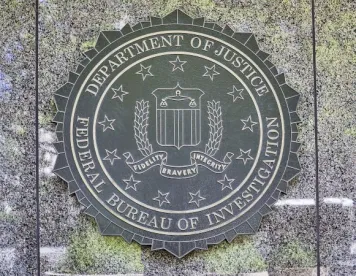Remarks as Delivered
Good [afternoon]. In just a few minutes, Deputy Attorney General Lisa Monaco and I will be meeting with all 93 of our U.S. Attorneys, and with the heads of the Department’s law enforcement components, to discuss our summer anti-violent crime strategy.
Among other things, we will be reinforcing the importance of identifying, investigating, and prioritizing the prosecution of those who are responsible for the greatest violence in our communities.
We will discuss the U.S. Marshals’ upcoming launch of the next phase of Operation North Star. The last two phases resulted in the capture of more than 2,300 fugitives wanted for violent crimes across the country. Our Deputy U.S. Marshals will conduct this next phase together with our state and local task force partners to target the most dangerous criminals in communities with the highest levels of violence.
We will also discuss DEA’s plans to launch the third phase of Operation Overdrive. So far, the first two phases of that operation have resulted in the seizure of over 13 million deadly doses of fentanyl and over 1,300 illegal guns, as well as over 1,700 arrests. The next phase will build on that work to disrupt and dismantle drug trafficking networks and the violent crime associated with them.
A little over two years ago, we issued a Department-wide strategy to leverage the resources of our federal prosecutors, agents, investigators, criminal justice experts, and grant programs to combat violent crime.
Since then, every one of our U.S. Attorneys’ Offices across the country has worked alongside our state and local partners to implement district-specific violent crime reduction strategies.
Each of our law enforcement components has worked with its state, local, Tribal, and territorial law enforcement partners to seize illegal guns and deadly drugs and to prosecute those who commit acts of violence in our communities.
In 2023 alone, we have already prosecuted more than 6,000 individuals for violent crimes.
At the same time, our grantmaking components have worked closely with communities across the country to provide targeted support and assistance. That includes providing resources to give law enforcement agencies the tools and training they need to protect their communities and to build the public trust that is essential to effective law enforcement.
Over the coming year, the Department anticipates that our Office of Justice Programs and our Office of Community Oriented Policing Services will award over $1.3 billion to support state and local law enforcement efforts to combat violent crime.
We have also accelerated our efforts to fight gun violence on every front – from cracking down on criminal gun-trafficking pipelines, to updating regulations, to deepening our partnerships with state and local law enforcement.
Today, ATF is working more closely than ever with our state and local partners to turn the evidence they collect at crime scenes into concrete leads. Using its powerful forensic ballistics tool, known as NIBIN, ATF has generated nearly 200,000 leads on violent criminals – just since last summer.
As we build on this work this summer, we will also be putting important new tools to use thanks to the passage last year of the Bipartisan Safer Communities Act.
Those include expanded background check requirements that require checking juvenile criminal history and mental health records before a firearm is sold to anyone under 21.
Thanks to those requirements, more than 200 firearms have been kept out of the hands of young people who should not have had access to them.
These tools also include the Act’s new proscriptions against illegal firearms trafficking and straw purchases.
Thanks to the work of our U.S. Attorneys, we have already charged more than 100 defendants under the Act’s gun trafficking provisions and seized hundreds of firearms in connection with those cases.
That work will continue.
Before we begin our meeting, I want to take this opportunity to publicly recognize the Department’s prosecutors and law enforcement agents.
Often, the Department’s law enforcement agents are among the first to arrive on the scene of a mass shooting. There, they come face-to-face with the devastation and horror inflicted on victims that, thankfully, most people will never see.
And often, the Department’s prosecutors are on the ground, consoling families and communities that have been shattered by horrific acts of violence, and pursuing justice on their behalf.
The Department’s prosecutors and law enforcement agents do enormously difficult and demanding work on behalf of the American people. And in doing so, they conduct themselves with the utmost integrity.
I am grateful to them. And I could not be prouder to work with them.
I can now take a few questions.



 />i
/>i

